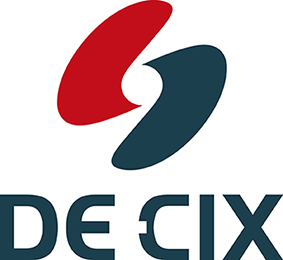Southern Europe – a Pivotal Region for Global Data Traffic
Location is becoming vital for the delivery of digital content and services, says Theresa Bobis from DE-CIX, and Southern Europe is ideally placed for global traffic flows.

© valio84sl | istockphoto.com
Mention Southern Europe to almost anyone from further north, and the almost immediate image that is conjured up – especially as travel restrictions reduce in a post-pandemic world – is the sun-kissed Mediterranean and a certain holiday spirit. But while tourists may be able to relax and unwind there, others are hard at work building the digital infrastructure and connectivity of tomorrow’s world.
Southern Europe is strategically positioned at the crossroads of intercontinental data flows from the Americas to Europe, to Africa, the Middle East and on to Asia, and in terms of international connectivity – not to mention digital infrastructure – there are many exciting developments.
As the recently-published TeleGeography white paper “The Southern European interconnection landscape” notes, Southern Europe’s international Internet bandwidth has enjoyed strong growth since 2016, compounding nearly 30% annually to reach almost 150 Tbps today – 2.75-times the capacity connected to the region five years ago. In the same period of time, colocation data center market has grown nearly 20%, and the Internet Exchange (IX) market has jumped by 50%. So, things are not slowing down in the south, despite the holiday season.
But what exactly makes Southern Europe the “place to be”? The happy coincidence of its geographical placement: with access to the Atlantic and the Mediterranean, Southern Europe is the junction between the globe’s traffic flows, bringing content east from the Americas, north from Africa, south from Northern Europe, and even West from the Middle East and Asia. For instance, TeleGeography tells us that nearly one-quarter of Sub-Saharan Africa’s international Internet bandwidth is connected to Southern Europe; for the Middle East, this rises to over 30%; while 80% of North Africa’s international bandwidth is linked to the region. Furthermore, EllaLink – the new submarine cable creating a low latency path across the southern Atlantic, directly connecting Brazil and South Europe – will enable a new data highway between Latin America and Europe. And this is only one of 7 new undersea cables to be connected to the region over the next two years.
In the coming years, geography will become increasingly important for the delivery of digital content and services. As innovative applications drive the latency requirements ever lower – because latency is the new currency of our digital era – the more essential it becomes to find the shortest possible routes between the content provider and the end user. As a result, it is no longer possible to rely solely in the traditional hubs for interconnection needs.
Southern Europe is closer to the global data highways than the FLAP hubs (Frankfurt, London, Amsterdam and Paris) further north, therefore offering a lower-latency gateway to Europe. As TeleGeography points out, networks “must distribute resources to increasingly localized nodes. Europe is no exception to this trend, and the need to shift and distribute network configurations has fostered significant demand for connectivity outside of traditional hubs and into increasingly localized sub-regions including Southern Europe.”
This is why DE-CIX decided, just five years ago, to enter the Southern European market with the establishment of the Internet Exchange DE-CIX Madrid. Since those early days, DE-CIX Madrid has become the heart of the largest neutral interconnection ecosystem in Southern Europe. Established in 2016, DE-CIX Madrid quickly became the fastest-growing IX in the world. In the meantime, DE-CIX has established four further IXs in Southern Europe – in Marseille, Lisbon, Palermo, and most recently, in Barcelona[JE2]. As of today, the total of connected networks at DE-CIX IXs in the region has risen to more than 430, with 64 access points. These serve the region and beyond with high-performance, low-latency and secure interconnection.
The year 2020 gave a significant boost to the digitalization of companies and services around the globe, and no less so in Southern Europe. Traffic at DE-CIX Madrid has increased by 50% since March last year, with current peak traffic already exceeding 650 Gbps per second. The power of digital communication brings us all closer to each other virtually and has helped us all through a difficult 18 months of pandemic-induced isolation, a time when we were unable to celebrate in person with our families and friends.
This summer, we are celebrating the fifth birthday of DE-CIX Madrid and we’ll be taking DE-CIX Barcelona into operation (with 20 networks already in the process of connecting). But there’s not time to just sit back and enjoy the party: there’s more work to be done. The Covid crisis has thrown into stark relief the regions of the world that have solid, reliable digital infrastructure, and those regions of the globe that remain underserved. Africa is a prime example of this, and right on the doorstep of Southern Europe. As the Internet industry, we must narrow the digital divide and work together to achieve the goal of a minimum level of digital infrastructure everywhere, so that all communities can in future have access to information, access to digital communication tools, and access to digital content.
And with Southern Europe acting as a gateway to Europe and beyond for North American, Latin American, African, Middle Eastern, and Asian networks, there are entire markets to be brought online with fast, secure and resilient access to the global Internet. DE-CIX in Southern Europe is part of the digital value chain for the global data highways – not just bringing networks together, but also helping to bring people closer together.
Theresa Bobis is Regional Director Southern Europe at DE-CIX, responsible for the DE-CIX Internet Exchanges in Marseille, Palermo, Lisbon, and Madrid. She has recently been nominated by Capacity Magazine as one of 20 Women to Watch in 2021.





